The Visual Guide to
Bovine Reproduction
- Normal Calving
- Multiple Births
- Calving Facilities
- Pelvic Dimensions
- Calving Problems
- True Breech
- Sizing the Fetus
- Calving Injuries
- Cesarean Section
- Fetotomy
- Pelvic Splitting
- Episiotomy
Obstetrics: Pelvic Splitting
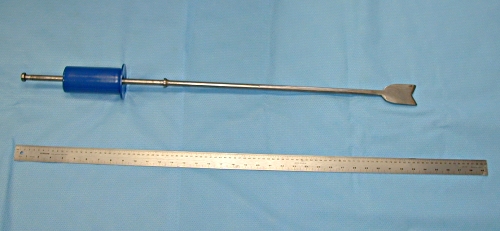
Pelvic Chisel.
This pelvic chisel is 85 cm long. It has a sliding hammer (blue) to propel the chisel through the cartilagenous pubic symphysis of a first calf heifer, in cases of feto-maternal disproportion.
Drost M (1974)
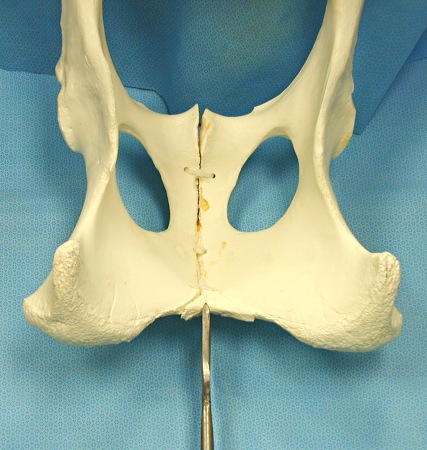
Initial Placement.
Placement of the chisel is in a vertical position in the ischial notch at the posterior end of the pubic symphysis. Ossification may have started at both ends of the symphysis.
Drost M (1974)
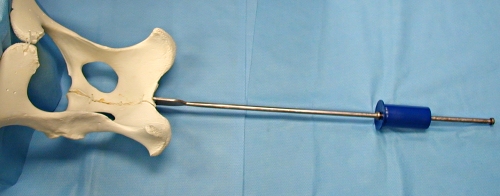
Alignment of the Chisel.
The chisel must remain perfectly aligned with the symphysis, horizontally as well as (the blade) vertically. The orientation may be monitored by palpation through the floor of the vagina.
Drost M (1974)
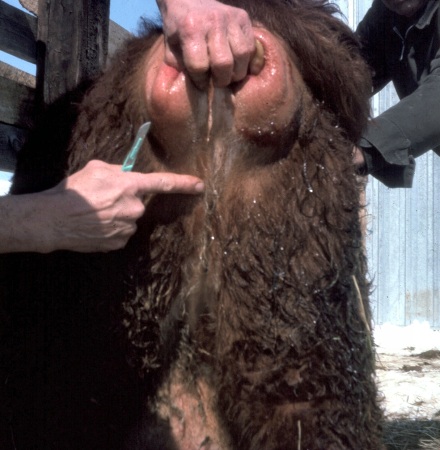
Ischiopubic Symphysiotomy 1.
A pubic symphysiotomy is performed under epidural anesthesia in the standing heifer. A 6 to 8 cm skin incision is made on the midline about 5 cm below the lower commisure of the vulva, where the bony V of the ischia can be palpated. The incision is made through the subcutaneous tissues down to the bone. Ischiopublic symphysiotomies are indicated in primiparous heifers only, in which the pubic symphysis has not yet (completely) ossified.
Seemann CW (1983)
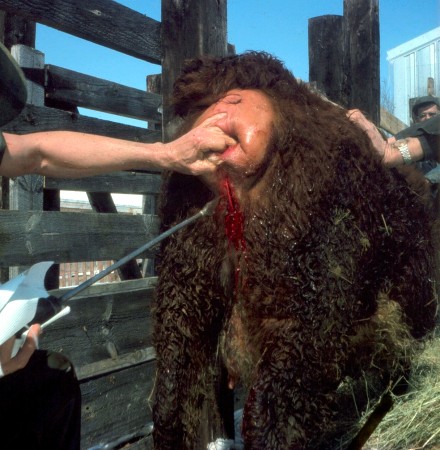
Ischiopubic Symphysiotomy 2.
The pelvic chisel is inserted through the skin incision to the depth of the ischial V, and is then directed parallel to the floor of the pelvis.
Seemann CW (1983)

Ischiopubic Symphysiotomy 3.
The position of the chisel is checked by the operator's free hand in the vagina. The blade can be readily be palpated through the vaginal floor. The orientation of the blade should be vertical throughout the procedure.
Seemann CW (1983)
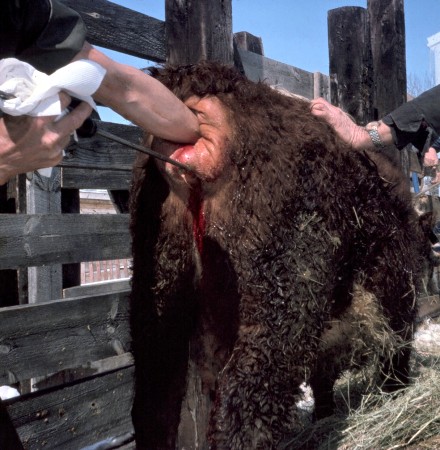
Ischiopubic Symphysiotomy 4.
Sighting carefully down the spine of the heifer, in order to remain oriented, the operator gives the chisel a few sharp taps with the sliding hammer to seat the blade in the pelvic symphysis. The hand in the vagina monitors the orientation and the forward progress of the chisel.
Seemann CW (1983)
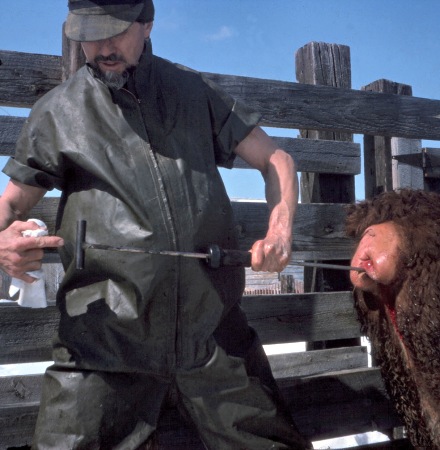
Ischiopubic Symphysiotomy 5.
If the chisel has a handle as shown here, which is oriented parallel to the blade, the orientation is easier to monitor. The blade must remain vertical and moving along the midline throughout the cutting procedure. Taps with the hammer should be less forceful as the blade nears the anterior end of the symphysis, lest the sharp blade plunge into the ventral wall of the uterus. When the cut is complete, the chisel can be slid back and forth manually. Another way to check whether separation is achieved, is to rock the heifer's hindquarters from side to side, while the operator's hand in the vagina palpates the rise and fall of the opposing edges.
Seemann CW (1983)
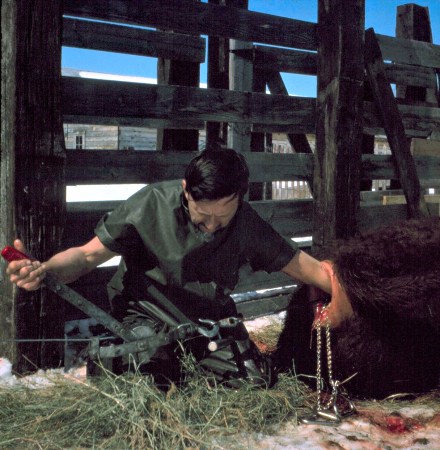
Ischiopubic Symphysiotomy 6.
Delivery of the calf begins after the heifer has been cast in right lateral recumbency. This allows the hindlegs to spread and to angle forward which improves the angle of the pelvic inlet. Traction is applied to both legs which may be aided with the use of a calf puller, while the position and progress of the head are monitored intermittently.
Seemann CW (1983)
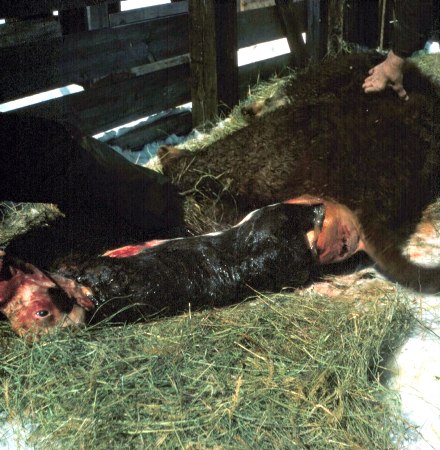
Ischiopubic Symphysiotomy 7.
After the head and shoulders are outside the vulva, the remainder of the calf readily follows, as it is pulled at a downward angle. It is not necessary to rotate the fetal pelvis per se, as the iliac shafts are capable of spreading. In this case an episiotomy was also done. The calf was delivered alive.
Seemann CW (1983)
